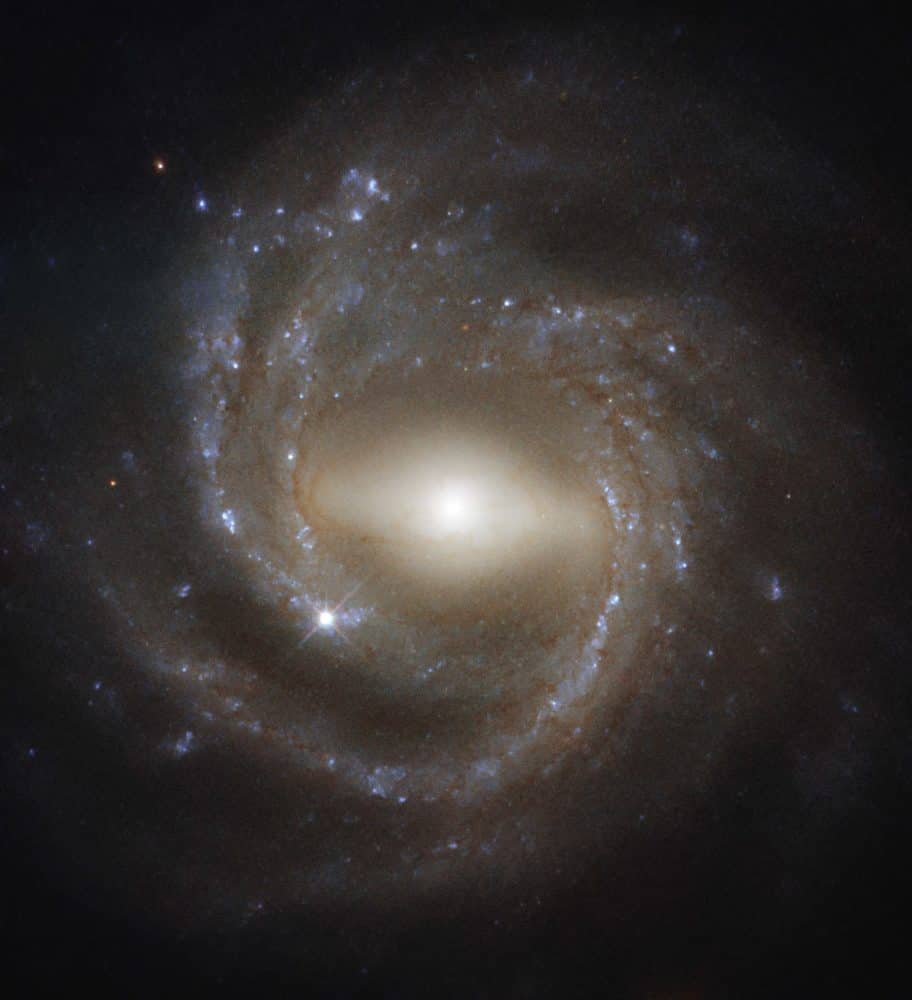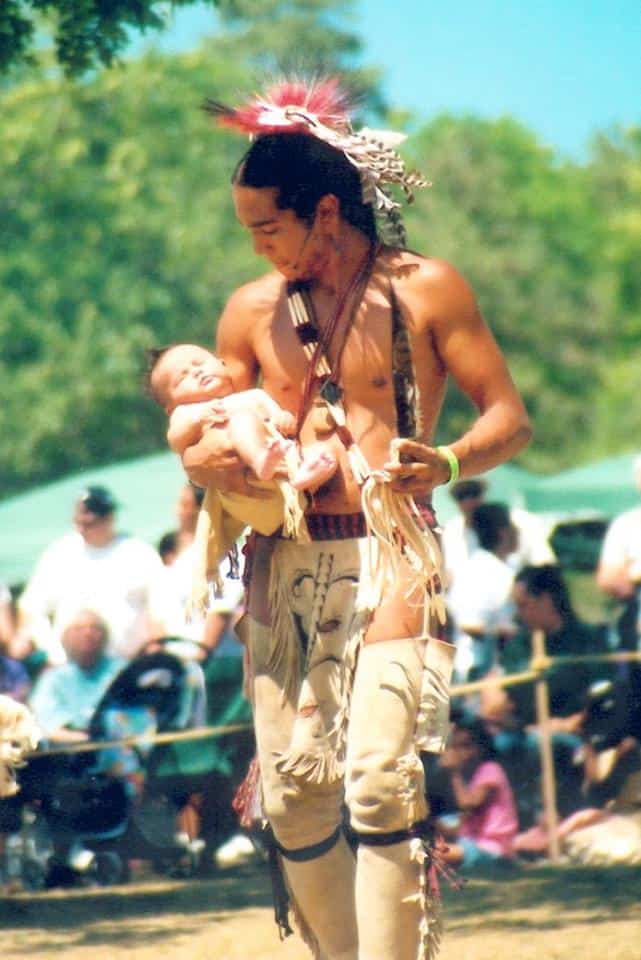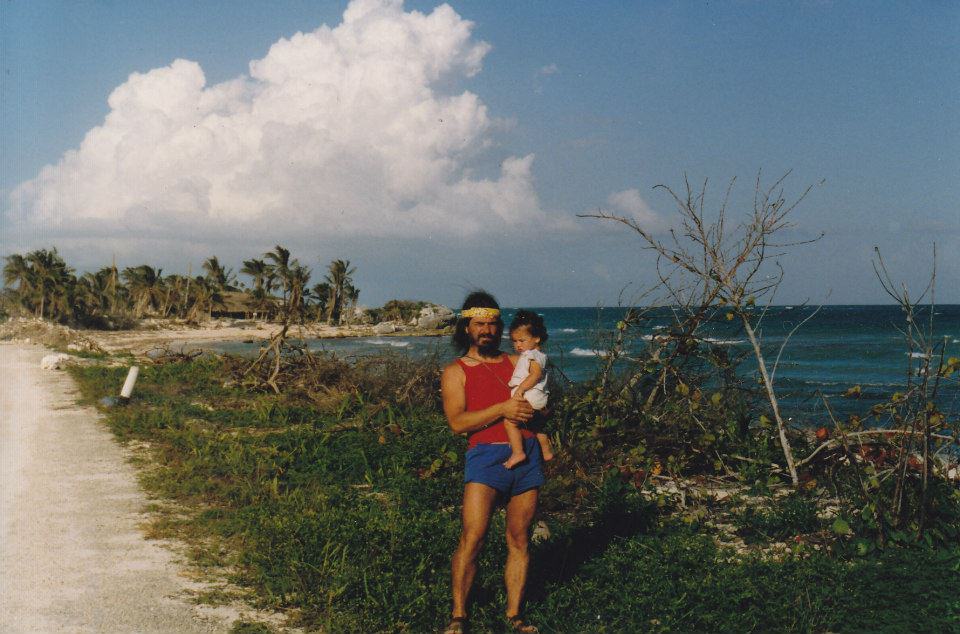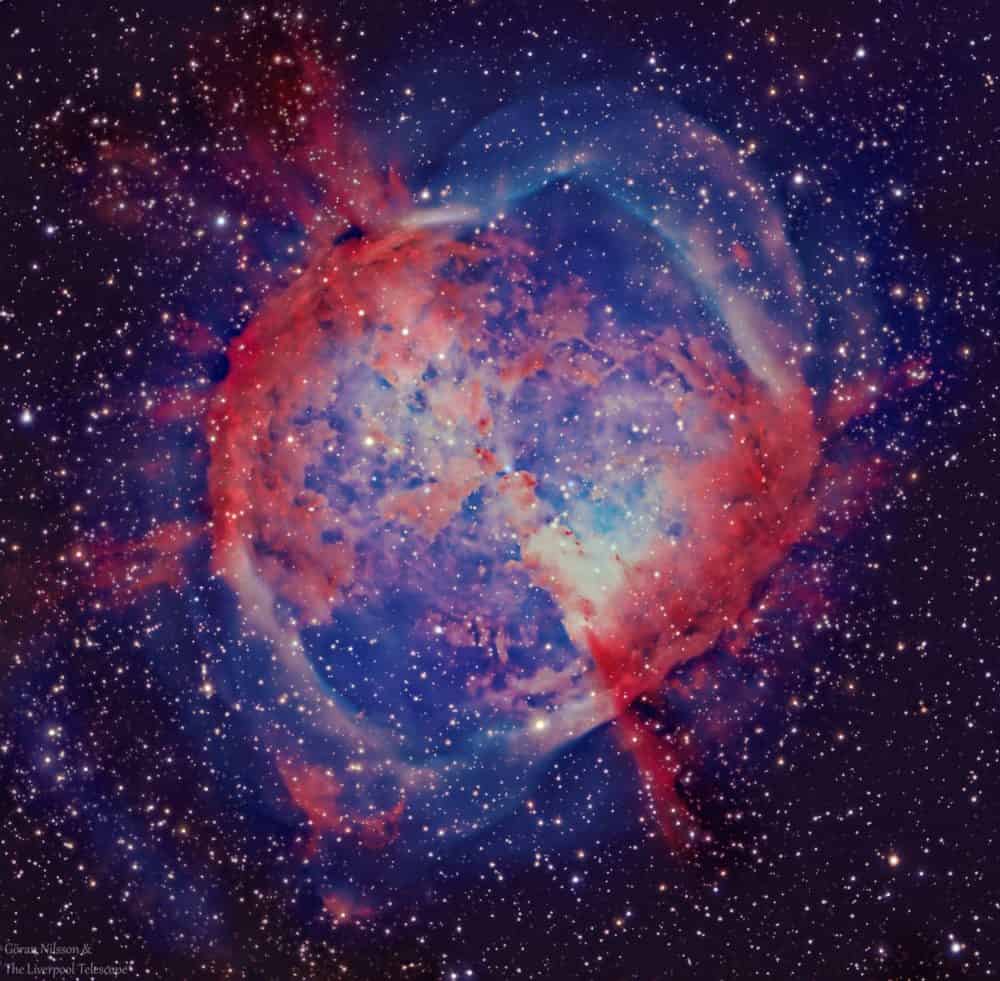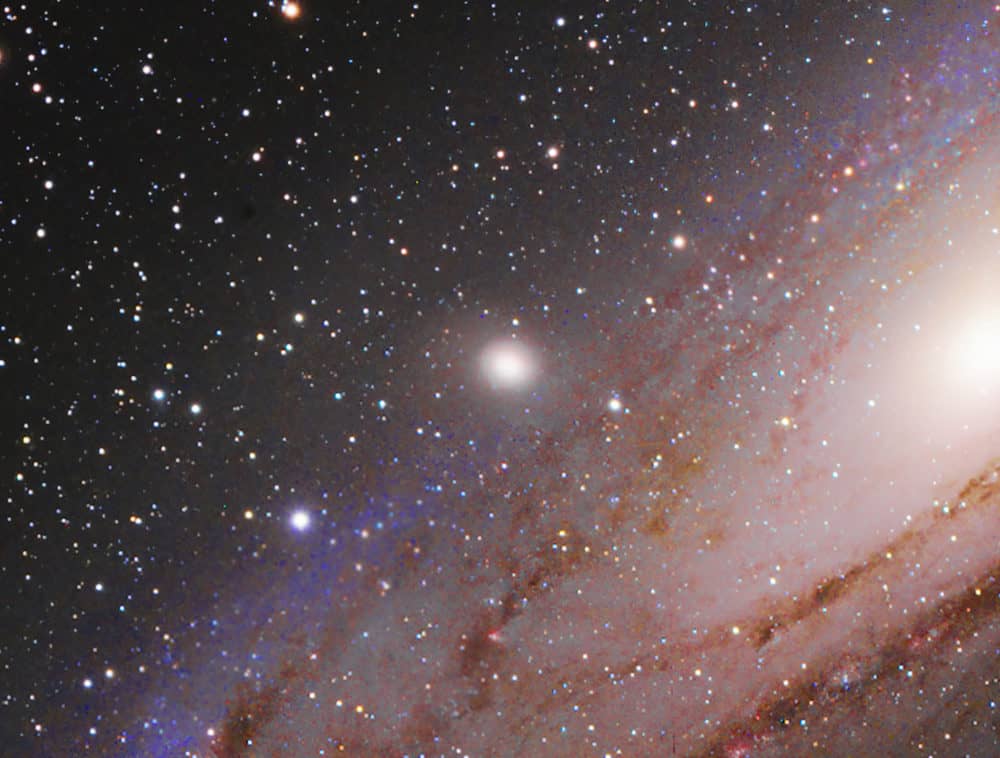Blog
NGC 7773 is a barred spiral galaxy located in the constellation of Pegasus at an approximate distance of 392.55 million light years. NGC 7773 was discovered on October 9, 1790 by William Herschel
This striking image was taken by the NASA/ESA Hubble Space Telescope’s Wide Field Camera 3, a powerful instrument installed on the telescope in 2009. WFC3 is responsible for many of Hubble’s most breathtaking and iconic photographs, including Pictures of the Week. Shown here, NGC 7773 is a beautiful example of a barred spiral galaxy. A luminous bar-shaped structure cuts prominently through the galaxy’s bright core, extending to the inner boundary of NGC 7773’s sweeping, pinwheel-like spiral arms. Astronomers think that these bar structures emerge later in the lifetime of a galaxy, as star-forming material makes its way towards the galactic centre — younger spirals do not feature barred structures as often as older spirals do, suggesting that bars are a sign of galactic maturity. They are also thought to act as stellar nurseries, as they gleam brightly with copious numbers of youthful stars. Our galaxy, the Milky Way, is thought to be a barred spiral like NGC 7773. By studying galactic specimens such as NGC 7773 throughout the Universe, researchers hope to learn more about the processes that have shaped — and continue to shape — our cosmic home.
more...Tony Scott (born Anthony Joseph Sciacca June 17, 1921 – March 28, 2007) was an American jazz clarinetist and arranger known for an interest in folk music around the world. For most of his career he was held in high esteem in new-age music circles because of his decades-long involvement in music linked to Asian cultures and to meditation. Born in Morristown, New Jersey, Scott attended Juilliard School from 1940 to 1942. In the 1950s he worked with Sarah Vaughan and Billie Holiday. He also had a young Bill Evans and Paul Motian as side-men on several albums released between 1957 and 1959. In the late 1950s he won on four occasions the Down Beat critics poll for clarinetist in 1955, 1957, 1958 and 1959. He was known for a more “cool” style than Buddy DeFranco.
Despite this he remained relatively little-known as the clarinet had been in eclipse in jazz since the emergence of bebop. In 1959 he left New York City, where he had been based, and abandoned the United States for a time. In the 1960s he toured South, East, and Southeast Asia. This led to his playing in a Hindu temple, spending time in Japan, and releasing Music for Zen Meditation in 1964 for Verve Records. In 1960 a Down Beat poll for Japan saw readers there name him best clarinetist[6] while the United States preferred Buddy DeFranco. More recently he did a Japanese special on Buddhism and Jazz, although he continued to work with American jazz musicians and played at the Newport Jazz Festival in 1965. In the years following that he worked in Germany, Africa, and at times in South America.
more...
Charles Walter Rainey III (born June 17, 1940 in Cleveland, Ohio, United States) is an American bass guitarist who has performed and recorded with many well-known acts, including Aretha Franklin, Steely Dan, and Quincy Jones.
Rainey’s youthful pursuits included violin, piano and trumpet. Later, while attending Lane College in Tennessee, Rainey switched to baritone horn to join the school’s travelling brass ensemble. While on active military duty, Rainey learned rhythm guitar and began playing professionally with local bands. His lack of improvisational skills on guitar led him to pick up the bass, and soon Rainey found himself working steadily as a studio bassist in New York City, recording or touring with many of the greatest acts of that time.
By the 1970s he had played with Jerome Richardson, Grady Tate, Mose Allison, Gato Barbieri, and Gene Ammons, as well as with Eddie Vinson at the 1971 Montreux Festival.
As a member of The King Curtis All-Stars, he toured with the Beatles on their second run across the United States. By the beginning of the 1970s, Rainey had firmly established his place as one of New York City’s first call session bass guitarists.[citation needed]
In 1972, he released his first solo album The Chuck Rainey Coalition on Skye Records. The coalition consists of notable session musicians Richard Tee, Warren Smith, Specs Powell, Eric Gale, Bernard Purdie, Herb Lovelle, Cornell Dupree and Billy Butler.
more...Igor Fyodorovich Stravinsky ComSE (/strəˈvɪnski/; Russian: И́горь Фёдорович Страви́нский, IPA: [ˈiɡərʲ ˈfʲɵdərəvʲɪtɕ strɐˈvʲinskʲɪj]; 17 June [O.S. 5 June] 1882 – 6 April 1971) was a Russian-born composer, pianist, and conductor. He is widely considered one of the most important and influential composers of the 20th century.
Stravinsky’s compositional career was notable for its stylistic diversity. He first achieved international fame with three ballets commissioned by the impresario Serge Diaghilev and first performed in Paris by Diaghilev’s Ballets Russes: The Firebird (1910), Petrushka (1911), and The Rite of Spring(1913). The latter transformed the way in which subsequent composers thought about rhythmic structure and was largely responsible for Stravinsky’s enduring reputation as a musical revolutionary who pushed the boundaries of musical design. His “Russian phase” which continued with works such as Renard, the Soldier’s Tale and Les Noces, was followed in the 1920s by a period in which he turned to neoclassicism. The works from this period tended to make use of traditional musical forms (concerto grosso, fugue and symphony), drawing on earlier styles, especially from the 18th century. In the 1950s, Stravinsky adopted serial procedures. His compositions of this period shared traits with examples of his earlier output: rhythmic energy, the construction of extended melodic ideas out of a few two- or three-note cells and clarity of form, and of instrumentation.
more...https://www.youtube.com/watch?v=jen_dGYP5hM
more...The Dumbbell Nebula (also known as Apple Core Nebula, Messier 27, M 27, or NGC 6853) is a planetary nebula in the constellation Vulpecula, at a distance of about 1227 light-years. This object was the first planetary nebula to be discovered; by Charles Messier in 1764. At its brightness of visual magnitude 7.5 and its diameter of about 8 arcminutes, it is easily visible in binoculars, and a popular observing target in amateur telescopes. The Dumbbell Nebula appears to be shaped like a prolate spheroid and is viewed from our perspective along the plane of its equator. In 1992, Moreno-Corral et al. computed that its rate of expansion in the plane of the sky was no more than 2.3″ per century. From this, an upper limit to the age of 14,600 yr may be determined. In 1970, Bohuski, Smith, and Weedman found an expansion velocity of 31 km/s. Given its semi-minor axis radius of 1.01 ly, this implies that the kinematic age of the nebula is some 9,800 years.
Tom Harrell (born June 16, 1946) is an American jazz trumpeter, flugelhornist, composer, and arranger. Voted Trumpeter of the Year of 2018 byJazz Journalists Association, Harrell has won awards and grants throughout his career, including multiple Trumpeter of the Year awards from Down Beatmagazine, SESAC Jazz Award, BMI (Broadcast Music Incorporated) Composers Award, and Prix Oscar du Jazz. He received a Grammy Awardnomination for his big band album, Time’s Mirror.
Tom Harrell was born in Urbana, Illinois but moved to the San Francisco Bay Area at the age of five. He started playing trumpet at eight, and within five years he was playing gigs with local bands. In 1969 he graduated from Stanford University with a music composition degree and joined Stan Kenton‘s orchestra, touring and recording with them throughout 1969.
After leaving Kenton, Harrell played with Woody Herman‘s big band (1970–1971), Azteca (1972), the Horace Silver Quintet (1973–1977), with whom he made five albums, the Sam Jones-Tom Harrell Big Band, the Lee Konitz Nonet (1979–1981), George Russell, and the Mel Lewis Orchestra (1981). From 1983 to 1989 he was a pivotal member of the Phil Woods Quintet and made seven albums with the group. In addition, he recorded albums with Vince Guaraldi for whom he also did some arranging for the Peanuts television specials, Bill Evans, Dizzy Gillespie, Ronnie Cuber, Bob Brookmeyer, Lionel Hampton, Bob Berg, Cecil Payne, Bobby Shew, Philip Catherine, Ivan Paduart, Joe Lovano, Charlie Haden‘s Liberation Orchestra, Charles McPherson, David Sánchez, Sheila Jordan, Jane Monheit, the King’s Singers and Kathleen Battle among others. Harrell is featured on Bill Evans’ final studio recording, We Will Meet Again, which won a Grammy Award for Best Instrumental Jazz Performance, Group.
more...Eli “Lucky” Thompson (June 16, 1924 – July 30, 2005) was an American jazz tenor and soprano saxophonist. While John Coltrane usually receives the most credit for bringing the soprano saxophone out of obsolescence in the early 1960s, Thompson (along with Steve Lacy) embraced the instrument earlier than Coltrane. Thompson was born in Columbia, South Carolina, and moved to Detroit, Michigan, during his childhood. Thompson had to raise his siblings after his mother died, and he practiced saxophone fingerings on a broom handle before acquiring his first instrument. He joined Erskine Hawkins‘ band in 1942 upon graduating from high school.
After playing with the swing orchestras of Lionel Hampton, Don Redman, Billy Eckstine (alongside Dizzy Gillespie and Charlie Parker), Lucky Millinder, and Count Basie, he worked in rhythm and blues and then established a career in bebop and hard bop, working with Kenny Clarke, Miles Davis, Gillespie and Milt Jackson.
Ben Ratliff notes that Thompson “connected the swing era to the more cerebral and complex bebop style. His sophisticated, harmonically abstract approach to the tenor saxophone built off that of Don Byas and Coleman Hawkins; he played with beboppers, but resisted Charlie Parker’s pervasive influence.” He showed these capabilities as sideman on many albums recorded during the mid-1950s, such as Stan Kenton‘s Cuban Fire!, and those under his own name. He recorded with Parker (on two Los Angeles Dial Records sessions) and on Miles Davis’s hard bop Walkin’ session. Thompson recorded albums as leader for ABC Paramount and Prestige and as a sideman on records for Savoy Records with Jackson as leader.
Thompson was strongly critical of the music business, later describing promoters, music producers and record companies as “parasites” or “vultures”. This, in part, led him to move to Paris, where he lived and made several recordings between 1957 and 1962. During this time, he began playing soprano saxophone.
more...Josh Nelson my friend, next door neighbor and High School teacher is having his first inaugural Art Exhibit & Opening today & tomorrow at his new studio Funny Looking Horse. It is so great having him in our neighborhood!
more...Messier 32 (also known as M32 and NGC 221) is a dwarf “early-type” galaxy located about 2.65 million light-years from Earth, appearing in the constellation Andromeda. M32 is a satellite galaxy of the Andromeda Galaxy (M31) and was discovered by Guillaume Le Gentil in 1749. M32 measures 6.5 ± 0.2 thousand light-years in diameter at the widest point.
The galaxy is a prototype of the relatively rare, compact elliptical (cE) galaxy class. Half the stars concentrate within an effective radius of only 100 parsecs. Densities in the central stellar cusp increase steeply, exceeding 3×107 M⊙ pc−3 at the smallest radii resolved by HST, and the half-light radius of this central star cluster is around 6 parsec. Like more ordinary elliptical galaxies, M32 contains mostly older faint red and yellow stars with practically no dust or gas and consequently no current star formation. It does, however, show hints of star formation in the relatively recent past.
more...Harry Edward Nilsson III (June 15, 1941 – January 15, 1994), usually credited as Nilsson, was an American singer-songwriter who achieved the peak of his commercial success in the early 1970s. His work is characterized by pioneering vocal overdub experiments, returns to the Great American Songbook, and fusions of Caribbean sounds. A tenor with a 3½ octave range, Nilsson was one of the few major pop-rock recording artists of his era to achieve significant commercial success without ever performing major public concerts or undertaking regular tours. The craft of his songs and the defiant attitude he projected remains a touchstone for later generations of indie rock musicians.
Born in Brooklyn, Nilsson moved to Los Angeles as a teenager to escape his family’s poor financial situation. While working as a computer programmer at a bank, he grew interested in musical composition and close-harmony singing, and was successful in having some of his songs recorded by various artists such as the Monkees. In 1967, he debuted on RCA Victor with the LP Pandemonium Shadow Show, followed by a variety of releases that include a collaboration with Randy Newman (Nilsson Sings Newman, 1970) and the original children’s story The Point! (1971). His most commercially successful albums, Nilsson Schmilsson (1971) and Son of Schmilsson (1972), produced the international top 10 singles “Without You” (1971) and “Coconut” (1972). His other top 10 hit, “Everybody’s Talkin’” (1968), was a prominent song in the 1969 film Midnight Cowboy. A version of Nilsson’s “One“, released by Three Dog Night in 1969, also reached the U.S. top 10.
During a 1968 press conference, the Beatles were asked what their favorite American group was and answered “Nilsson”. He soon formed close friendships with John Lennon and Ringo Starr. In the 1970s, Nilsson and Lennon were members of the Hollywood Vampires drinking club, embroiling themselves in a number of widely publicized, alcohol-fueled incidents. At the same time, they produced one collaborative album, Pussy Cats (1974). After 1977, Nilsson left RCA, and his record output diminished. In response to Lennon’s 1980 murder, he took a hiatus from the music industry to campaign for gun control. For the rest of his life, he recorded only sporadically.
Nilsson created the first remix album (Aerial Pandemonium Ballet, 1971) and recorded the first mashup song (“You Can’t Do That“, 1967). He was voted No. 62 in Rolling Stone‘s 2015 list of the “100 Greatest Songwriters of All Time“, where he was described as “a pioneer of the Los Angeles studio sound, a crucial bridge between the baroque psychedelic pop of the late Sixties and the more personal singer-songwriter era of the Seventies”. The RIAA certified Nilsson Schmilsson and Son of Schmilsson as gold records, indicating over 500,000 units sold each. His honors include Grammy Awards for two of his recordings; Best Contemporary Vocal Performance, Male in 1970 for “Everybody’s Talkin'” and Best Pop Vocal Performance, Male in 1973 for “Without You”. In 1994, Nilsson died of a heart attack while in the midst of recording new material for a since-unreleased comeback album.
more...John Arthur “Jaki” Byard (June 15, 1922 – February 11, 1999) was an American jazz multi-instrumentalist, composer and arranger. Mainly a pianist, he also played tenor and alto saxophones, among several other instruments. He was known for his eclectic style, incorporating everything from ragtime and stride to free jazz.
Byard played with trumpeter Maynard Ferguson in the late 1950s and early 1960s, and was a member of bands led by bassist Charles Mingus for several years, including on several studio and concert recordings. The first of his recordings as a leader was in 1960, but, despite being praised by critics, his albums and performances did not gain him much wider attention. In his 60-year career, Byard recorded at least 35 albums as leader, and more than 50 as a sideman. Byard’s influence on the music comes from his combining of musical styles during performance, and his parallel career in teaching.
From 1969 Byard was heavily involved in jazz education: he began teaching at the New England Conservatory of Music and went on to work at several other music institutions, as well as having private students. He continued performing and recording, mainly in solo and small group settings, but he also led two big bands – one made up of some of his students, and the other of professional musicians. His death, from a single gunshot while in his home, remains an unsolved mystery.
Byard was born in Worcester, Massachusetts. At that time, his parents – John Sr and Geraldine Garr – were living at 47 Clayton Street. Both of his parents played musical instruments; his mother played the piano, as did his uncles and grandmother, the last playing in cinemas during the silent film era. He began piano lessons at the age of six, but they ended when his family was affected by the Great Depression. He was also given a trumpet that belonged to his father, and attempted to copy the popular players of the time, Roy Eldridge and Walter Fuller.[4] As a boy he often walked to Lake Quinsigamond to listen to bands performing there. He heard Benny Goodman, Lucky Millinder, Fats Waller, and Chick Webb, and listened to other bands of the era on the radio. “Those were the things that inspired me – I guess it stuck with me”, he commented decades later.
https://www.youtube.com/watch?v=OqR1wtZgMA0
more...Erroll Louis Garner (June 15, 1923 – January 2, 1977; some sources say b. 1921) was an American jazz pianist and composer known for his swing playing and ballads. His best-known composition, the ballad “Misty“, has become a jazz standard. Scott Yanow of Allmusic calls him “one of the most distinctive of all pianists” and a “brilliant virtuoso.” He received a star on the Hollywood Walk of Fame at 6363 Hollywood Blvd.
Garner was born with his twin brother Ernest in Pittsburgh, Pennsylvania on June 15, 1923, the youngest of six children in an African-American family. He attended George Westinghouse High School (as did fellow pianists Billy Strayhorn and Ahmad Jamal). Garner began playing piano at the age of three. His elder siblings were taught piano by Miss Bowman. From an early age, Erroll would sit down and play anything she had demonstrated, just like Miss Bowman, his eldest sister Martha said. Garner was self-taught and remained an “ear player” all his life, never learning to read music. At age seven, he began appearing on the radio station KDKA in Pittsburgh with a group called the Candy Kids. By age 11, he was playing on the Allegheny riverboats. At 14 in 1937, he joined local saxophonist Leroy Brown.
He played locally in the shadow of his older pianist brother Linton Garner.
Garner moved to New York City in 1944. He briefly worked with the bassist Slam Stewart, and though not a bebop musician per se, in 1947 played with Charlie Parker on the “Cool Blues” session. Although his admission to the Pittsburgh music union was initially refused because of his inability to read music, it relented in 1956 and made him an honorary member. Garner is credited with a superb memory of music. After attending a concert by the Russian classical pianist Emil Gilels, Garner returned to his apartment and was able to play a large portion of the performed music by recall.
https://www.youtube.com/watch?v=wmJ-mi9mAuo
more...So Africa
more...More Posts
- Daily Roots with the Heptones
- Music for Surviving the Pandemic and Realizing Racial Justice
- The Cosmos with NGC 1398
- L. Subramaniam Day
- Steve Lacy Day
- Amália Rodrigues Day
- “Champion Jack” Dupree Day
- World Music with Alogte Oho
- Daily Roots with Yami Bolo
- Music for Surviving the Pandemic and Realizing Racial Justice
- The Cosmos with Neowise
- Al Di Meola Day
- George Clinton Day
- Don Patterson Day
- Junior Cook Day
- World Music with Mehdi Qamoum
- Daily Roots with Coco Tea
- Music for Surviving the Pandemic and Realizing Racial Justice
- The Cosmos with NGC 6302
- Cat Stevens Day
